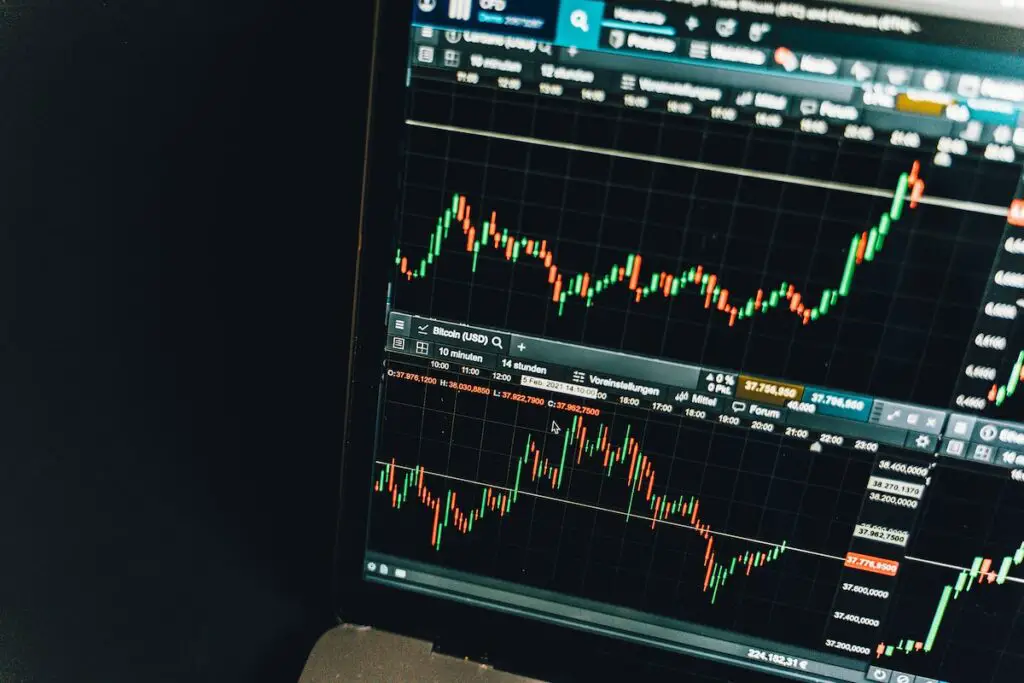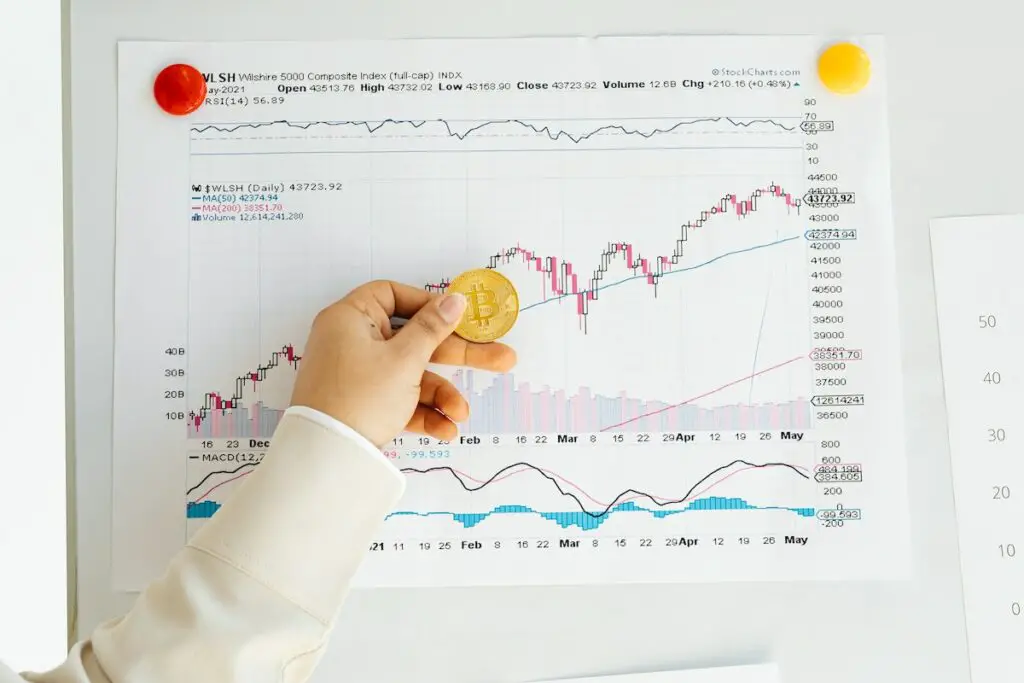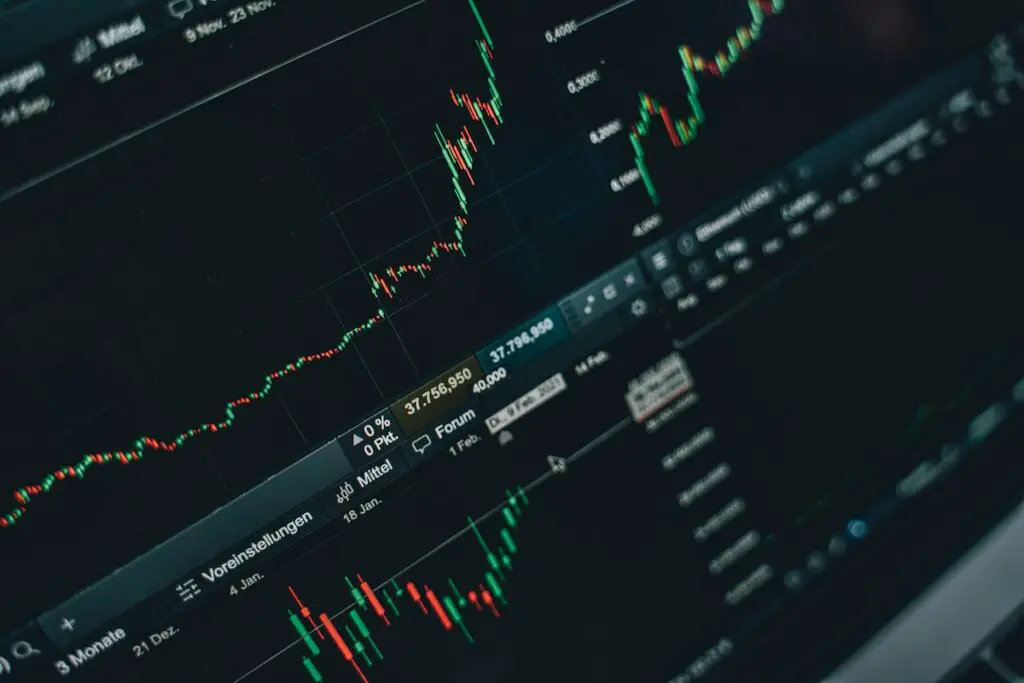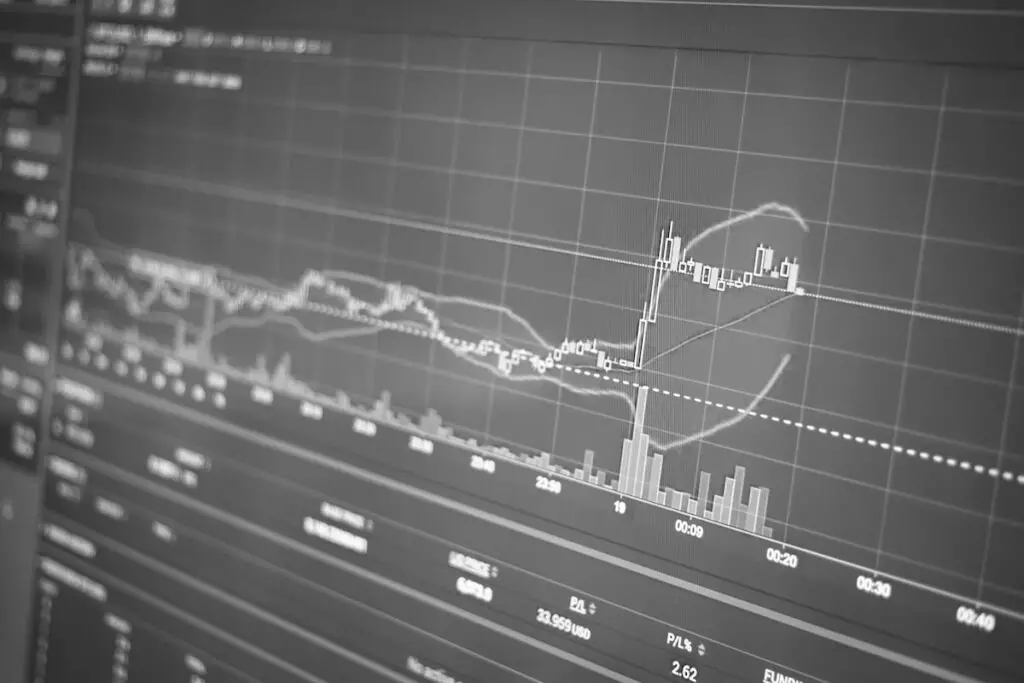What is spread trading? Spread trading is a popular strategy in financial markets. It involves simultaneously buying and selling related assets, allowing spread traders to profit from price differences between these assets.
What is spread trading? Spread trading is a strategy in financial markets where an investor simultaneously buys and sells related assets, aiming to profit from the price difference between them.
Contents
By offering spreads, traders can take advantage of market inefficiencies and capitalize on the potential for price convergence or divergence.
This type of trading is commonly used in pairs trading, where traders sell one asset while buying another related asset to exploit relative value disparities.
Spread trading offers an opportunity for traders to diversify their portfolios and potentially generate profits through strategic trades.

What is Spread Trading?
What is spread trading? Spread trading is a technique used by traders to profit from the price difference between two or more financial instruments.
It involves taking both long and short positions on different assets simultaneously.
The goal of spread trading is to capitalize on relative price movements rather than absolute price direction.
Taking Advantage of Price Differences
In spread trading, traders analyze the relationship between two or more financial instruments.
They look for discrepancies in prices, such as the yield spread or ask spread, and take advantage of these differences.
For example, if a trader believes that one stock will outperform another in the same industry.
They may buy the outperforming stock while simultaneously selling the underperforming stock.
Capitalizing on Relative Price Movements
Spread trades are not concerned with the overall direction of the market. Instead, they focus on the relative movement between assets.
Traders aim to profit from changes in the price difference between their chosen instruments.
This strategy allows them to potentially make money regardless of whether the overall market is going up or down.

Benefits and Considerations
Spread trading offers several benefits for traders:
- Diversification: By spreading their positions across multiple assets, traders can reduce their exposure to individual risks.
- Risk Management: Spread trades can help mitigate risk by hedging against potential losses.
- Flexibility: Traders have various options.
However, there are also considerations to keep in mind:
- Market Volatility: Spread trading can be affected by sudden market fluctuations, so careful monitoring is essential.
- Margin Requirements: Depending on your broker’s rules, you may need sufficient funds or margin requirements to engage in spread trading.
Understanding the Concept of Spread in Financial Trading
What is spread trading? In financial trading, the spread is the difference between the bid and ask prices of an asset.
It represents the cost of executing a trade and serves as a measure of market liquidity. Traders analyze spreads to identify potential opportunities for profitable trades.
Spread: The Bid-Ask Difference
The spread in financial trading refers to the gap between the highest price that a buyer is willing to pay (bid) and the lowest price that a seller is willing to accept (ask) for a particular asset.
This difference is determined by various factors such as supply and demand, market conditions, and transaction costs.
Cost of Executing Trades
The spread acts as a transaction cost incurred by traders when buying or selling assets. By paying this cost, traders can enter or exit positions in the market.
A narrower spread indicates lower transaction costs, while a wider spread implies higher costs.
Measure of Market Liquidity
The size of the spread reflects how easily an asset can be bought or sold without significantly impacting its price.
Assets with high liquidity tend to have tighter spreads since there are more buyers and sellers actively participating in the market.
Conversely, assets with lower liquidity may have wider spreads due to fewer participants.
Identifying Profitable Opportunities
Traders closely monitor spreads as they provide valuable insights into potential profit opportunities.
A narrowing spread may indicate increased buying interest or decreased selling pressure, suggesting an upward price movement.
On the other hand, a widening spread could signal reduced demand or increased selling pressure, potentially leading to a downward price trend.
Understanding spreads is crucial for traders as it helps them assess market conditions and make informed decisions about entering or exiting trades.
By analyzing spreads, traders can gauge transaction costs, evaluate market liquidity, and identify potential profit opportunities.

Exploring Different Types of Spreads and their Strategies
What is spread trading? In spread trading, there are various types of spreads that traders can utilize to implement their investing strategies.
Each type has its own unique strategy and purpose, allowing traders to take advantage of different market conditions and potential opportunities.
Let’s explore some of these spreads and the strategies associated with them.
Calendar Spreads
A calendar spread involves simultaneously buying and selling options with different expiration dates but the same strike price.
This strategy aims to profit from the difference in time decay between the two options.
Traders use calendar spreads when they anticipate minimal movement in the underlying asset’s price.
Intercommodity Spreads
Intercommodity spreads involve trading futures contracts on related assets or commodities. For example, a trader might trade crude oil futures against natural gas futures.
This strategy allows traders to take advantage of price relationships between different commodities or assets.
Option-Adjusted Spreads
Option-adjusted spreads (OAS) are used in fixed-income investments, such as bonds. OAS measures the yield spread over a benchmark rate after adjusting for embedded options in the bond.
It helps investors compare bonds with different features and maturities.
Traders choose specific spread strategies based on their market outlook, risk tolerance, and desired outcomes.
Some may opt for vertical spreads when they expect a moderate move in an asset’s price, while others may use wider spreads for higher potential profits but also increased risk.
By understanding the various types of spreads available and their associated strategies, traders can make informed decisions when implementing their trading plans.
It’s important to consider factors such as liquidity, transaction costs, and overall market conditions before selecting a specific spread strategy.

Advantages and Drawbacks of Spread Trading
Advantages
Spread trading offers several advantages for traders. Firstly, it reduces exposure to market volatility.
This means that even if the overall market is experiencing ups and downs, spread traders can potentially still make profits.
Secondly, spread trading allows for consistent profits regardless of the direction of the market.
Whether it’s going up or down, as long as the trader has chosen the right strategy, they have a chance to make money.
Lastly, spread trading provides flexibility in choosing different strategies.
Traders can explore various approaches and find the one that suits their goals and risk tolerance.
Pros:
- Reduced exposure to market volatility.
- Potential for consistent profits regardless of overall market direction.
- Flexibility in choosing different strategies.
Drawbacks
While spread trading has its advantages, there are also some drawbacks to consider.
One drawback is that compared to directional trades, spread trading may have limited profit potential.
Another drawback is that spread trading requires advanced knowledge and analysis skills.
It can be complex and challenging for beginners without a solid understanding of the markets. Spread trading often involves multiple positions, which leads to higher transaction costs.
Cons:
- Limited profit potential compared to directional trades.
- Increased complexity requiring advanced knowledge and analysis skills.
- Higher transaction costs due to multiple positions.

Examples of Spread Trading: Interest Rate and Calendar Spreads
Interest rate spreads and calendar spreads are two common examples of spread trading techniques used in financial markets.
These strategies allow traders to take advantage of price discrepancies between different futures contracts or maturities within the same asset class.
Interest Rate Spreads
Interest rate spreads involve taking opposing positions on interest rate futures contracts with different maturities.
Traders analyze the economic relationship between these contracts to identify potential profit opportunities.
For example, a trader might take a bullish stance by buying a longer-term contract while simultaneously selling a shorter-term contract to capitalize on an expected increase in interest rates.
This strategy allows them to profit from changes in the yield curve and credit risk.
Calendar Spreads
Calendar spreads focus on exploiting price discrepancies between futures contracts with different expiration dates within the same commodity or asset class.
Traders aim to profit from relative price movements between these contracts over time.
For instance, if a trader believes that the price of crude oil will increase in the near term but decrease later.
They might buy a futures contract expiring in one month while simultaneously selling another contract expiring three months later.
Both interest rate spreads and calendar spreads demonstrate how traders can use spread trading techniques to profit from relative price movements rather than relying solely on predicting absolute market direction.
By taking advantage of these pricing anomalies, traders can potentially generate profits regardless of whether markets are rising or falling.
Intercommodity vs Intracommodity (calendar) Spreads
Intercommodity spreads and intracommodity spreads, also known as calendar spreads, are two types of spread trading strategies. Let’s take a closer look at each of them.
Intercommodity Spreads
What is spread trading? Intercommodity spreads involve trading related assets from different markets or sectors.
This strategy offers diversification benefits and allows traders to capitalize on intermarket relationships.
Here are some key points about intercommodity spreads:
- Diversification: By trading assets from different markets or sectors, intercommodity spreads help spread the risk across multiple markets.
- Intermarket Relationships: Traders can take advantage of price discrepancies between related assets in different markets.
- Examples: Trading crude oil futures against natural gas futures or gold futures against silver futures are examples of intercommodity spreads.
Intracommodity Spreads (Calendar Spreads)
Intracommodity spreads focus on price differences within the same market or sector.
This strategy allows traders to take advantage of seasonal or supply-demand imbalances within a specific market.
Here’s what you need to know about intracommodity spreads:
- Seasonal Imbalances: Traders can profit from price differences that occur due to seasonal factors affecting supply and demand within a particular market.
- Supply-Demand Factors: By analyzing supply and demand dynamics, traders can identify opportunities for spread trading within the same market.
- Examples: Trading corn futures with different expiration dates or crude oil futures with different delivery months are examples of intracommodity (calendar) spreads.
Both intercommodity and intracommodity (calendar) spreads offer unique opportunities for traders to profit from price discrepancies.
It is important for traders to carefully analyze the underlying factors driving these spreads and develop effective strategies based on their understanding.

Option-adjusted Spread and Getting Started with Options
The option-adjusted spread (OAS) is a measure used in fixed-income investments to compare the yield of a bond with that of a risk-free instrument.
It helps investors understand the additional compensation they receive for taking on the risks associated with the bond.
By incorporating options into their strategies, spread traders can enhance potential returns and manage risk effectively.
Understanding Basic Option Concepts
Getting started with options requires understanding basic option concepts such as calls, puts, strike prices, and expiration dates. Here’s a breakdown of these key terms:
- Calls: A call option gives the holder the right to buy an underlying asset at a specified price within a specific timeframe.
- Puts: A put option gives the holder the right to sell an underlying asset at a specified price within a specific timeframe.
- Strike Prices: The strike price is the predetermined price at which an underlying asset can be bought or sold when exercising an option.
- Expiration Dates: Options have expiration dates that determine when they become invalid.
Incorporating Options into Spread Trading Strategies
Spread traders can use options in various ways to enhance their trading strategies:
- Option Spreads: Traders can create spreads by simultaneously buying and selling different options contracts with varying strike prices or expiration dates.
- Long Options: Going long on an option means buying it with the expectation that its value will increase over time.
- Short Options: Going short on an option means selling it with the hope that its value will decrease over time.
Benefits of Using Options in Spread Trading
Incorporating options into spread trading offers several advantages:
- Enhanced Returns: By using options strategically, traders have the potential to increase their overall returns.
- Risk Management: Options provide traders with tools to manage risk effectively by hedging against adverse market conditions.
- Flexibility: Traders can choose from various options strategies based on their investment goals and market conditions.
Key takeaways on spread trading
Spread trading is a popular trading strategy that involves buying and selling related assets at the same time. The goal is to profit from the price differences between these assets.
For example, if a trader believes that the price of gold will increase relative to silver, they might buy gold and sell silver simultaneously.
By doing so, they hope to make a profit when the price difference between the two assets widens.
Traders analyze different types of spreads and choose appropriate strategies based on market conditions.
In spread trading, traders analyze various types of spreads to identify profitable opportunities.
Some common types of spreads include calendar spreads, vertical spreads, and diagonal spreads. Each type has its own characteristics and requires different strategies.
Traders carefully assess market conditions, such as volatility and trend direction, to determine which spread strategy would be most suitable.
Spread trading offers advantages such as reduced exposure to volatility but also has drawbacks like limited profit potential.
One advantage of spread trading is that it can help reduce exposure to market volatility.
Since spread trades involve both buying and selling positions, traders are less affected by sudden market swings compared to traditional directional trades.
Spread trading allows traders to benefit from relative value trading rather than relying solely on the direction of an individual asset’s price movement.
However, it’s important to note that spread trading also has its drawbacks. One limitation is the limited profit potential compared to directional trades.
While spread traders aim for smaller profits per trade, they typically have higher win rates due to the nature of their strategy.
Another consideration is transaction fees associated with executing multiple legs of a spread trade.

Conclusion
What is spread trading? In conclusion, spread trading is a popular strategy in financial markets that involves simultaneously buying and selling related securities or derivatives.
It allows traders to take advantage of price differences between two or more assets, aiming to profit from the convergence or divergence of their prices.
By understanding the concept of spread in financial trading and exploring different types of spreads and their strategies, traders can make informed decisions based on market conditions.
Spread trading offers several advantages such as reduced risk through hedging, potential for consistent profits, and flexibility across various asset classes.
However, it also comes with drawbacks including transaction costs, market volatility risks, and the need for continuous monitoring.
Examples like interest rate spreads and calendar spreads provide practical insights into how spread trading works in real-world scenarios.
For those interested in delving deeper into spread trading, understanding option-adjusted spreads and getting started with options can be beneficial.
Options offer additional opportunities for managing risk and maximizing returns.
It is important to note that successful spread trading requires careful analysis, research, and a disciplined approach.
To learn more about spread trading strategies and stay up-to-date with the latest trends in financial markets.
Consider subscribing to reputable financial publications or attending educational webinars conducted by industry experts.
Practicing on demo accounts offered by online brokers can help refine your skills before committing real capital.
FAQs
1. What are some common risks associated with spread trading?
Spread trading carries certain risks including market volatility risk where prices may move against your position unexpectedly. Other risks include liquidity risk (difficulty in executing trades at desired prices), counterparty risk (default by one party involved), and operational risks (technology failures or errors).
2. Can I use spread trading strategies in any type of market?
Yes, spread trading strategies can be applied to various markets including stocks, commodities, currencies, bonds, and derivatives markets. The key is to identify assets that have a strong correlation or relationship and analyze their price movements to make informed trading decisions.
3. How much capital do I need to start spread trading?
The amount of capital required for spread trading varies depending on factors such as the market you are trading, the size of your positions, and your risk tolerance. It is recommended to start with a sufficient amount of capital that allows you to manage risk effectively and withstand potential losses.
4. Are there any specific tools or software for spread trading?
There are numerous online platforms and brokerage firms that offer specialized tools and software for spread trading. These platforms often provide real-time market data, advanced charting capabilities, order execution functionality, and risk management tools to assist traders in implementing their strategies.
5. How can I stay updated with market trends relevant to spread trading?
To stay updated with market trends, it is advisable to follow reputable financial news sources, subscribe to industry newsletters, join online communities or forums dedicated to trading discussions, and participate in educational webinars or seminars conducted by experienced traders or analysts. Regularly analyzing charts and studying historical price patterns can help identify emerging trends in the markets.





Leave a Reply